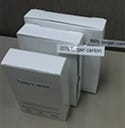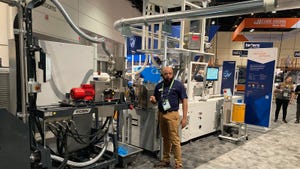Sustainability in Medical Device Packaging? Yeah, It�’s a Thing
Medtronic Packaging Engineer Jennifer Griffin describes some of the steps taken by the world’s largest medical device company to shrink its environmental footprint.
December 17, 2020

|
Jennifer Griffin, Senior Principal Packaging Engineer, Medtronic. |
Medical packaging is one of the last sustainable packaging frontiers, according to Jennifer Griffin, Senior Principal Packaging Engineer at Medtronic, but serious efforts are underway to shrink its footprint. During Virtual Engineering Week earlier this month, she described how her company, the world's largest medical device company, is setting an example. The bullet points below summarize some of the key takeaways of her presentation. For a deeper dive, you can still watch the 20-minute session through Dec. 31, 2020. Register for free at the Virtual Engineering Week website, if you have not already done so, and then log in at https://login.swapcard.com for access to dozens of conference sessions, including Griffin’s under the Dec. 2 schedule at 11 a.m., as well as virtual exhibitor booths.
In fiscal year 2020, Medtronic redesigned secondary packaging for three products, including two used for minimally invasive spine therapy devices. “We went from dual sterile-barrier to single sterile-barrier packaging,” said Griffin, “in all cases reducing the weight and size of the packaging.” Medtronic shrank the size of the product cartons, as well. The changes yielded a combined 45 to 85% decrease in packaging size. “It was a win in material reduction, sterilization and shipping costs, and storage,” added Griffin.
Medtronic actively supports environmentally preferred sourcing (EPS) programs, such as the one established by Kaiser Permanente. These programs establish a set of robust criteria that medical device companies must meet in order to do business with them, explained Griffin. EPS programs don’t just target medical devices the hospitals or purchasing groups buy, “but everything they buy to support their network,” noted Griffin.
In 2019, Medtronic revised the size and material used in primary and secondary packaging for a line of gastrointestinal devices. This allowed the company to increase the number of devices per shipping container from 126 to 168 and reduced greenhouse gas emissions by 29%, said Griffin.
Griffin also cited two packaging redesigns that achieved not only sustainability objectives but also connected with customers in surprising ways. The first project involved three package designs (pictured) for the same device, all of which passed performance testing. Voice-of-customer research revealed a strong preference for the smallest package size, and that actually became a competitive advantage. “One of the packages is 65% larger and the other is 20% larger than the packaging in use today,” said Griffin, who then recounted a visit to a hospital. While there, she happened to see this device being used and asked the staff how they liked the packaging. “There are about five competitors making a similar device, and I was surprised to learn that the staff in this hospital were using our product because of the package size,” said Griffin.
Another example of a change in packaging that profoundly resonated with customers was an upgrade to an existing device that allowed an overall reduction in packaging size and weight. The new design resulted in a narrower package that made it harder to remove from the shelf, where the products are stored like books. Medtronic engineers added a feature, called the EZ Pull corner, that enabled easy purchase for the clinician. “The feedback we got was phenomenal,” said Griffin. "The hospital staff loved the ability to pull out the package quickly. Some even sent videos — unsolicited — to show how easy it was.”
The reams of literature that accompany some devices is also an opportunity to put sustainability intiatives into play. For implantable and more sophisticated devices, that literature can cover a tabletop. Some of that information could be provided electronically, noted Griffin. For reasons of practitioner and patient safety and liability issues, you might be able to eliminate only a couple of pieces of paper, but it all adds up, said Griffin.
About the Author(s)
You May Also Like




